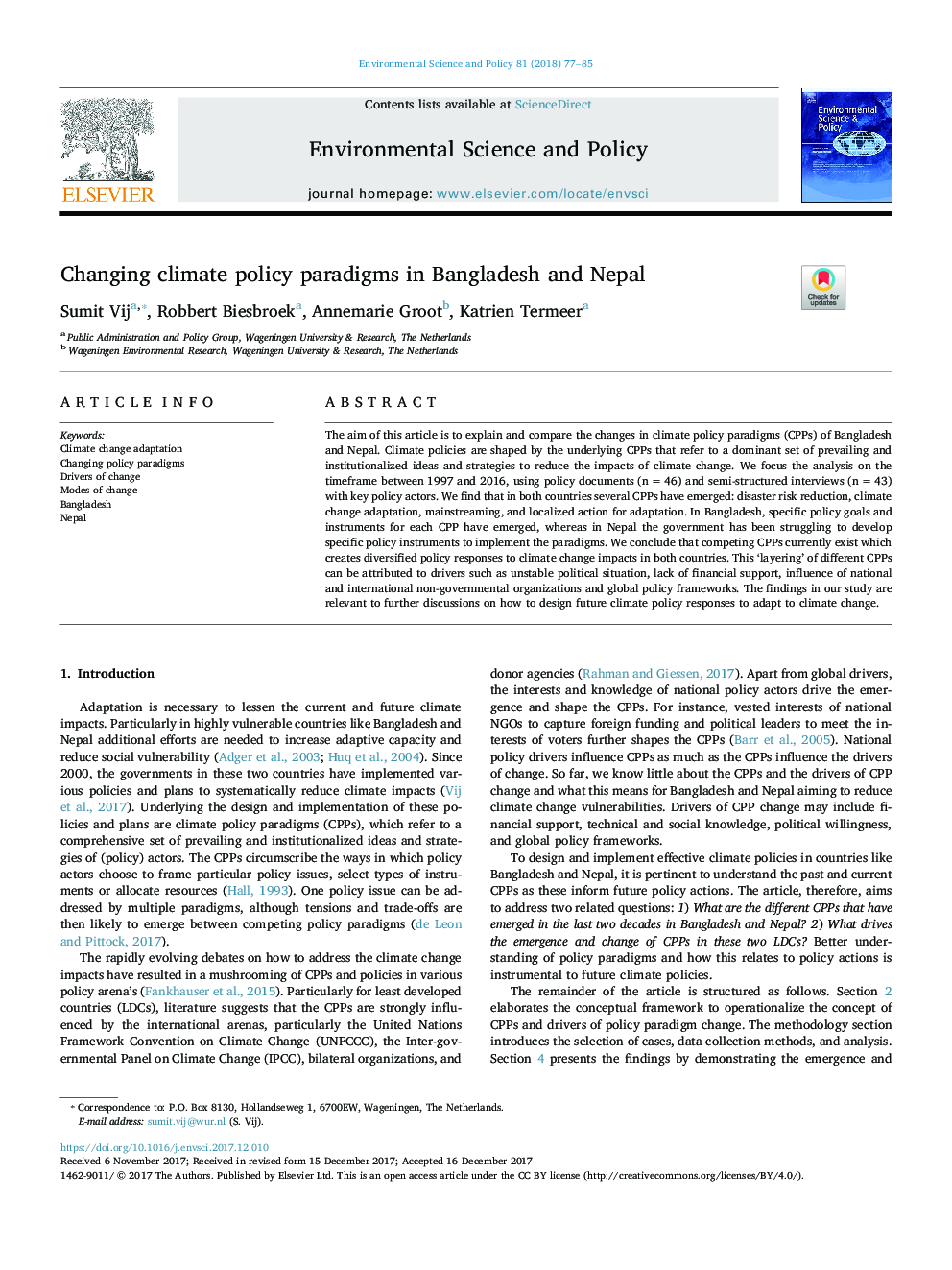| Article ID | Journal | Published Year | Pages | File Type |
|---|---|---|---|---|
| 7466247 | Environmental Science & Policy | 2018 | 9 Pages |
Abstract
The aim of this article is to explain and compare the changes in climate policy paradigms (CPPs) of Bangladesh and Nepal. Climate policies are shaped by the underlying CPPs that refer to a dominant set of prevailing and institutionalized ideas and strategies to reduce the impacts of climate change. We focus the analysis on the timeframe between 1997 and 2016, using policy documents (nâ¯=â¯46) and semi-structured interviews (nâ¯=â¯43) with key policy actors. We find that in both countries several CPPs have emerged: disaster risk reduction, climate change adaptation, mainstreaming, and localized action for adaptation. In Bangladesh, specific policy goals and instruments for each CPP have emerged, whereas in Nepal the government has been struggling to develop specific policy instruments to implement the paradigms. We conclude that competing CPPs currently exist which creates diversified policy responses to climate change impacts in both countries. This 'layering' of different CPPs can be attributed to drivers such as unstable political situation, lack of financial support, influence of national and international non-governmental organizations and global policy frameworks. The findings in our study are relevant to further discussions on how to design future climate policy responses to adapt to climate change.
Related Topics
Physical Sciences and Engineering
Energy
Renewable Energy, Sustainability and the Environment
Authors
Sumit Vij, Robbert Biesbroek, Annemarie Groot, Katrien Termeer,
